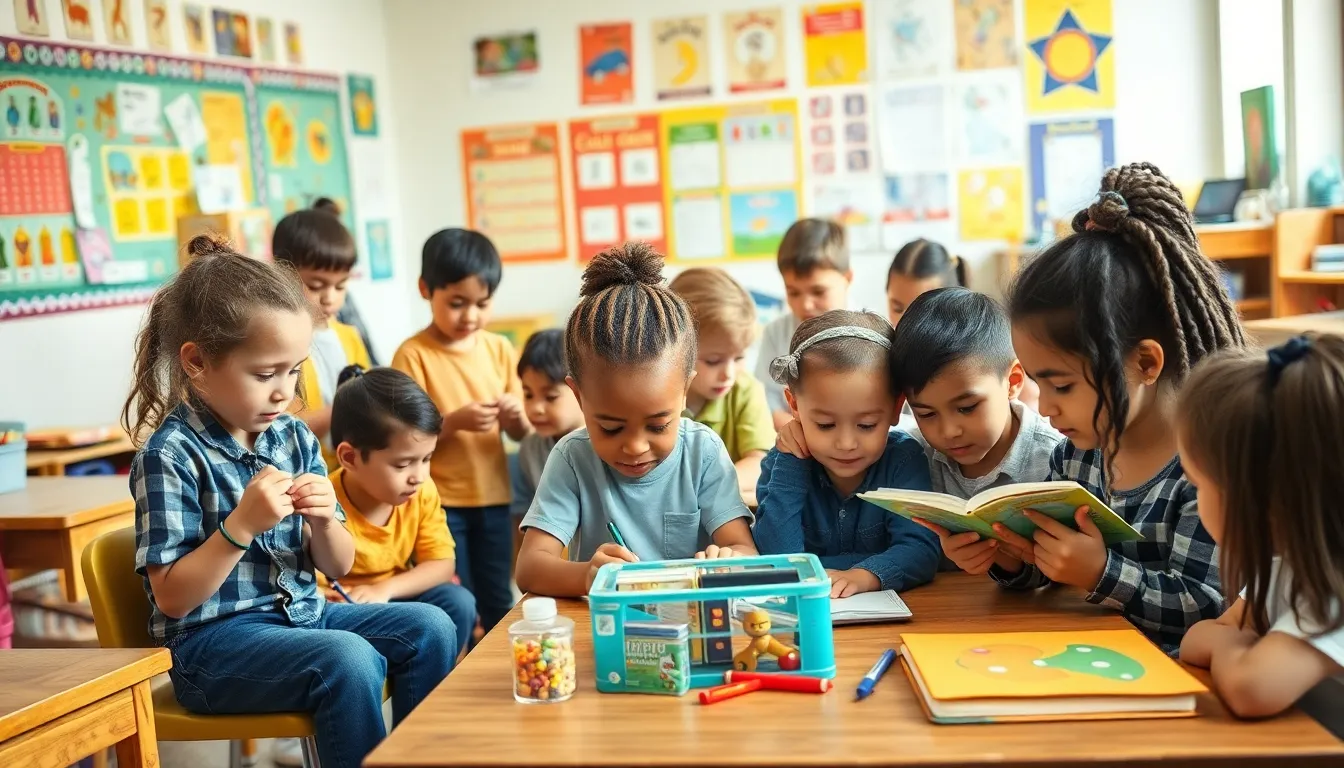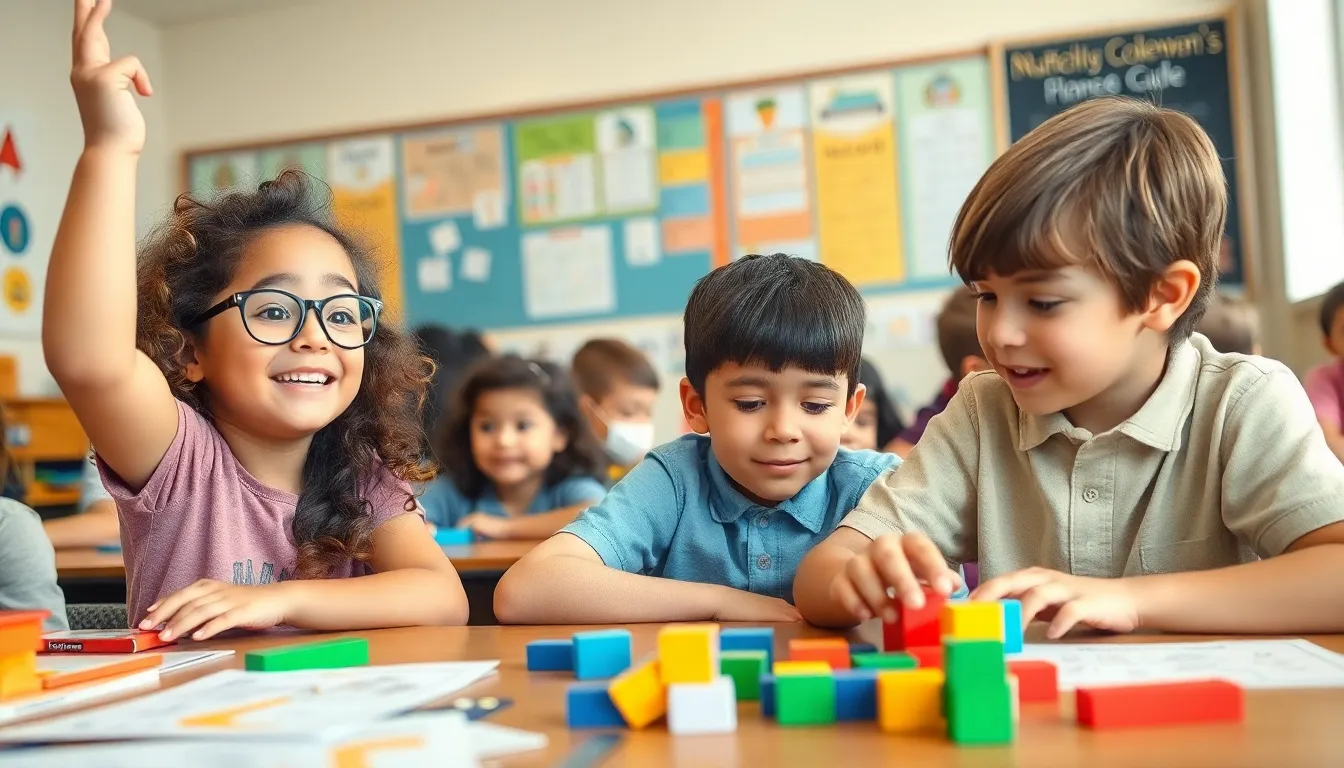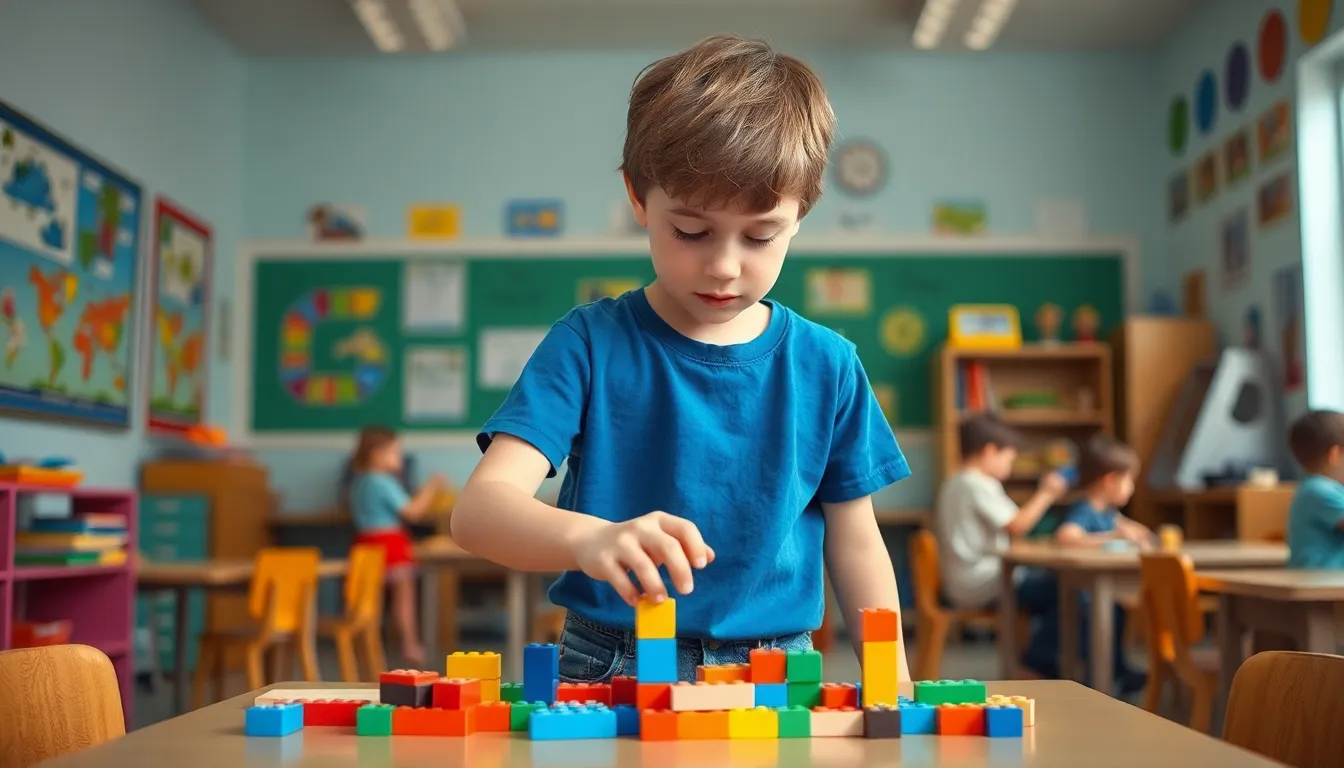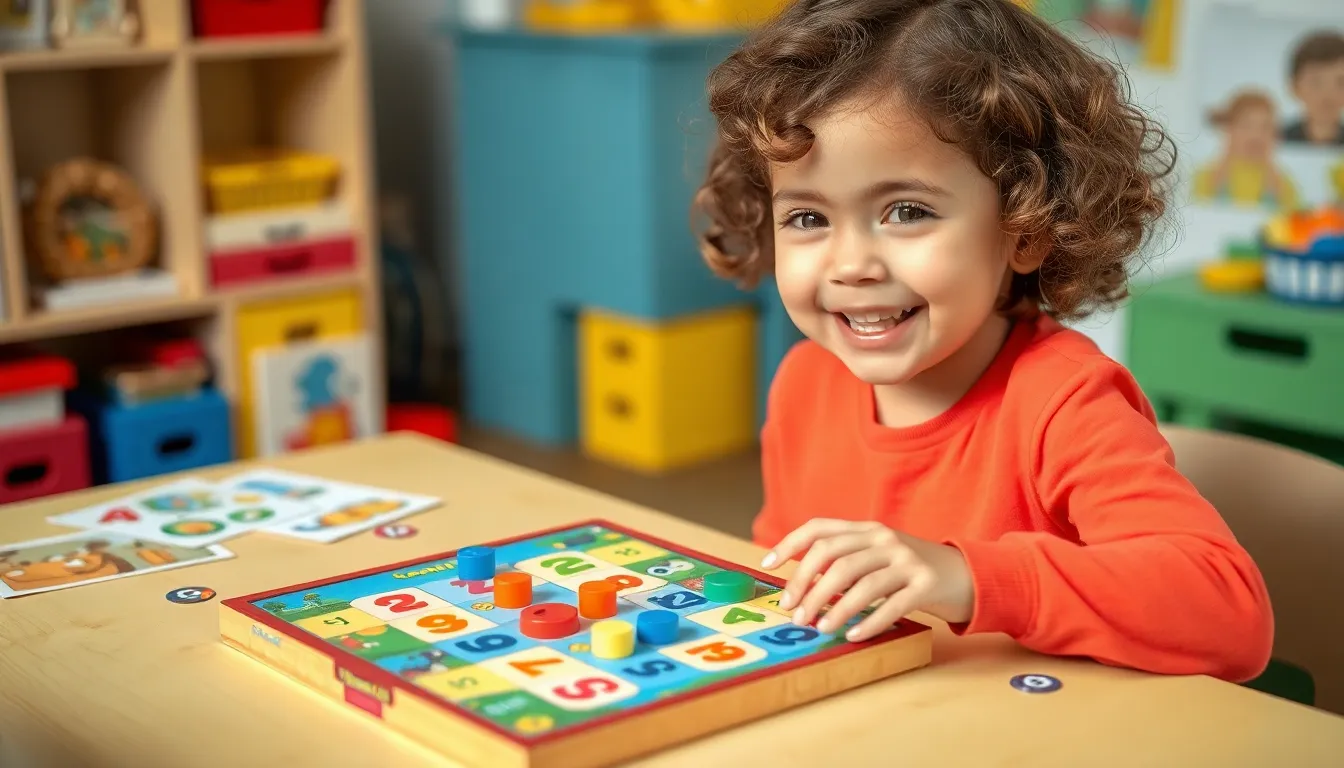Learning disabilities might sound like a daunting term, but they’re more common than most people think. Imagine trying to read a book while your brain insists on playing hide-and-seek with the words. That’s a daily reality for many individuals. Yet, with the right tools and support, they can turn these challenges into strengths.
Understanding learning disabilities isn’t just for educators or specialists; it’s essential for everyone. By shedding light on these conditions, society can offer better support and create an inclusive environment. So, let’s dive into the world of learning disabilities, where knowledge is power and every challenge is just a stepping stone to success. After all, who wouldn’t want to turn their quirks into superpowers?
Table of Contents
ToggleOverview of Learning Disabilities
Learning disabilities encompass a range of disorders that affect the brain’s ability to process information. Individuals encounter various challenges related to reading, writing, and arithmetic due to these disabilities.
Definition and Types
Learning disabilities refer to neurological conditions that hinder how a person processes information. Specific types include dyslexia, affecting reading skills; dysgraphia, impairing writing abilities; and dyscalculia, which influences math skills. Each type presents unique challenges and occurs independently or in conjunction with others. These disabilities do not reflect a person’s intelligence but indicate that they learn differently.
Prevalence and Demographics
Learning disabilities are more widespread than commonly understood, affecting approximately 1 in 5 students in the United States. This statistic accounts for roughly 20% of the student population, impacting individuals across all demographics and socio-economic backgrounds. While some demographics report higher prevalence rates, such as individuals with a family history of learning disabilities, these challenges span various populations. Early identification and support can significantly affect the academic success and emotional well-being of those with these disabilities.
Causes of Learning Disabilities

Learning disabilities arise from various factors that affect cognitive functioning. Understanding these causes provides clarity about how they impact individuals.
Genetic Factors
Genetic factors play a crucial role in the development of learning disabilities. Studies indicate that these disabilities tend to run in families, suggesting a hereditary component. Specifically, conditions like dyslexia have been linked to specific genes. Research illustrates that 40% of children with a parent who has a learning disability may also face similar challenges. Additionally, twin studies show that if one twin has a learning disability, the other twin has a 60% chance of experiencing it as well. Thus, genetic predisposition significantly influences the likelihood of developing a learning disability.
Environmental Influences
Environmental influences contribute to the onset of learning disabilities. Factors such as prenatal exposure to toxins, malnutrition, and stressful home environments can adversely affect brain development. For instance, children exposed to lead during critical developmental stages are at a higher risk for learning disabilities. Additionally, socio-economic status can shape access to resources that promote cognitive growth. Notably, children from low-income families may encounter inconsistent schooling and inadequate educational support. Consequently, these environmental factors can impede a child’s ability to process information effectively, leading to various learning challenges.
Signs and Symptoms
Recognizing signs and symptoms of learning disabilities is essential for early intervention. Identifying these indicators can lead to more effective support for affected individuals.
Early Warning Signs
Trouble with reading comprehension often surfaces as a primary indication. Frequent spelling errors may occur in written work. Difficulty following instructions presents another common sign. Children might struggle to master basic math concepts or show confusion with sequences. A tendency to avoid tasks requiring reading or writing can also signal potential challenges. Often, these early signs become apparent during early education settings.
Age-Specific Indicators
At a young age, difficulties may manifest as trouble with letter recognition or rhyming games. By elementary school, challenges with reading fluency and staying organized become more pronounced. Middle schoolers often exhibit issues with note-taking, completing assignments, or studying effectively. As students progress into high school, problems may arise in areas like time management and abstract reasoning. Recognizing these age-specific signs helps educators and caregivers address learning needs timely.
Assessment and Diagnosis
Assessment and diagnosis of learning disabilities involve a systematic approach to identifying specific challenges. Understanding an individual’s unique learning profile is essential.
Evaluation Process
The evaluation process typically begins with gathering information from parents and teachers. They provide insights into academic performance and behavioral observations. Next, professionals conduct interviews and standardized assessments to evaluate cognitive abilities. Experts analyze patterns in learning to identify discrepancies between potential and actual performance. Collaboration among educators, psychologists, and parents creates a comprehensive understanding of the individual’s needs.
Standardized Testing Methods
Standardized testing methods play a key role in diagnosing learning disabilities. These assessments measure various skills, including reading, writing, and math. Most tests follow consistent procedures, ensuring reliable and valid results. For example, the Wechsler Individual Achievement Test assesses academic skills across several domains. Results help identify areas of strength and weakness, informing targeted interventions. Educational teams utilize data from these tests to develop tailored support plans.
Intervention Strategies
Intervention strategies for learning disabilities focus on providing support to enhance educational and emotional outcomes. Various methods aim to meet the unique needs of individuals with these disabilities.
Educational Approaches
Educational approaches incorporate tailored teaching techniques and resources. Multi-sensory instruction engages multiple senses to enhance learning experiences. For instance, using visual aids and hands-on activities fosters better comprehension in students with dyslexia or dyscalculia. Individualized Education Programs (IEPs) develop personalized learning plans that outline specific goals and strategies. Classroom accommodations, such as timed tests and preferential seating, further support students in demonstrating their knowledge. Collaborative learning opportunities, including small group activities, encourage peer interaction and skill development. Regular progress monitoring ensures that interventions adjust to evolving needs, promoting continuous growth.
Behavioral Interventions
Behavioral interventions address specific behaviors related to learning disabilities. Positive reinforcement builds motivation by acknowledging achievements, no matter how small. Strategies such as setting clear expectations and using visual schedules help establish routines, reducing anxiety for students. Additionally, modeling desired behaviors offers tangible examples for individuals to mimic. Teaching self-regulation skills empowers students to manage their impulses and emotions effectively. Implementing consistent feedback reinforces learning objectives and encourages students to stay focused. Overall, these interventions aim to create a supportive environment that fosters both academic and personal growth.
Support for Individuals and Families
Support plays a crucial role in addressing learning disabilities. Families and individuals benefit from a variety of resources and tailored strategies.
Resources and Organizations
Numerous organizations provide guidance and support for those affected by learning disabilities. The Learning Disabilities Association of America offers educational resources and advocacy services. National Center for Learning Disabilities functions as a hub for research and information tailored to families and educators. Parent training and information centers serve as valuable tools for connecting families with local support. Accessing these resources empowers individuals and families to understand their options and find timely assistance.
Coping Strategies
Implementing effective coping strategies enhances daily functioning for individuals with learning disabilities. Establishing a consistent routine helps create a structured environment. Utilizing visual aids, such as charts and diagrams, improves information processing. Breaking tasks into smaller, manageable steps reduces overwhelm and boosts confidence. Encouraging open communication between educators, caregivers, and students fosters a collaborative atmosphere. Practicing mindfulness techniques promotes emotional regulation and coping skills, supporting overall well-being. Prioritizing these strategies ensures a more supportive journey through learning challenges.
Learning disabilities present unique challenges that require understanding and support from society as a whole. By recognizing the signs and fostering an inclusive environment, individuals can thrive despite their difficulties. Early intervention and tailored educational strategies play a crucial role in empowering those affected, allowing them to harness their strengths and overcome obstacles.
Resources and support networks are vital for families navigating these challenges, providing guidance and advocacy. Embracing the diversity of learning styles not only enriches the educational landscape but also promotes empathy and awareness in communities. Ultimately, the journey through learning disabilities can lead to growth and resilience, transforming challenges into opportunities for success.



